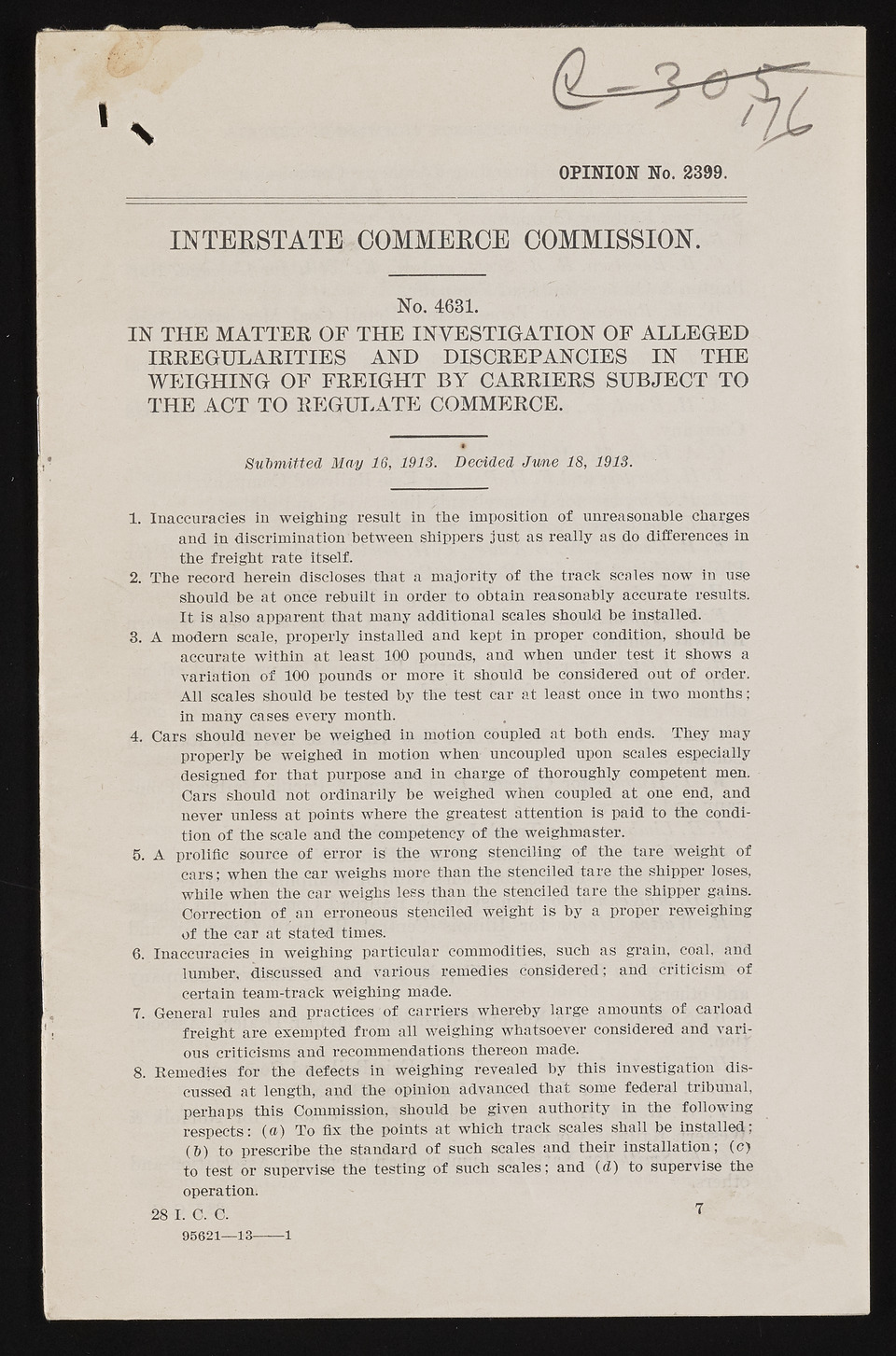Copyright & Fair-use Agreement
UNLV Special Collections provides copies of materials to facilitate private study, scholarship, or research. Material not in the public domain may be used according to fair use of copyrighted materials as defined by copyright law. Please cite us.
Please note that UNLV may not own the copyright to these materials and cannot provide permission to publish or distribute materials when UNLV is not the copyright holder. The user is solely responsible for determining the copyright status of materials and obtaining permission to use material from the copyright holder and for determining whether any permissions relating to any other rights are necessary for the intended use, and for obtaining all required permissions beyond that allowed by fair use.
Read more about our reproduction and use policy.
I agree.Information
Digital ID
Permalink
Details
Member of
More Info
Rights
Digital Provenance
Publisher
Transcription
OPINION No. 2399. INTERSTATE COMMERCE COMMISSION. No. 4631. I N T H E M A T T E R O F T H E I N V E S T I G A T I O N O F A L L E G E D I R R E G U L A R I T I E S A N D D IS C R E P A N C IE S I N T H E W E I G H I N G O F F R E I G H T B Y C A R R IE R S S U B J E C T T O T H E A C T T O R E G U L A T E C O M M E R C E . Submitted May 16, 1913. Decided June 18, 1918. 1. Inaccuracies in weighing result in the imposition o f unreasonable charges and in discrimination between shippers just as really as do differences in the freight rate itself. 2. The record herein discloses that a majority o f the track scales now in use should be at once rebuilt in order to obtain reasonably accurate results. I t is also apparent that many additional scales should be installed. 3. A modern scale, properly installed and kept in proper condition, should be accurate within at least 100 pounds, and when under test it shows a variation o f 100 pounds or more it should be considered out o f order. A ll scales should be tested by the test car at least once in two months; in many cases every month. 4. Cars should never be weighed in motion coupled at both ends. They may properly be weighed in motion when- uncoupled upon scales especially designed for that purpose and in charge o f thoroughly competent men. Cars should not ordinarily be weighed when coupled a t one end, and never unless at points where the greatest attention is paid to the condition o f the scale and the- competency o f the weighmaster. 5. A prolific source o f error is the wrong stenciling o f the tare weight of cars; when the car weighs more than the stenciled tare the shipper loses, while when the car weighs less than the stenciled tare the shipper gains. Correction o f , an erroneous stenciled weight is by a proper reweighing o f the car at stated times. 6. Inaccuracies in weighing particular commodities, such as grain, coal, and lumber, discussed and various remedies considered; and criticism o f certain team-track weighing made. 7. General rules and practices o f carriers whereby large amounts of carload freight are exempted from all weighing whatsoever considered and various criticisms and recommendations thereon made. 8. Remedies for the defects in weighing revealed by this investigation discussed at length, and the opinion advanced, that some federal tribunal, perhaps this Commission, should be given authority in the following respects: (a ) To fix the points at which track scales shall be installed; (6 ) to prescribe the standard o f such scales and their installation; (c ) to test dr supervise the testing o f such scales; and (d ) to supervise the operation. 28 I. C. O. 7 95621— IS---- 1

